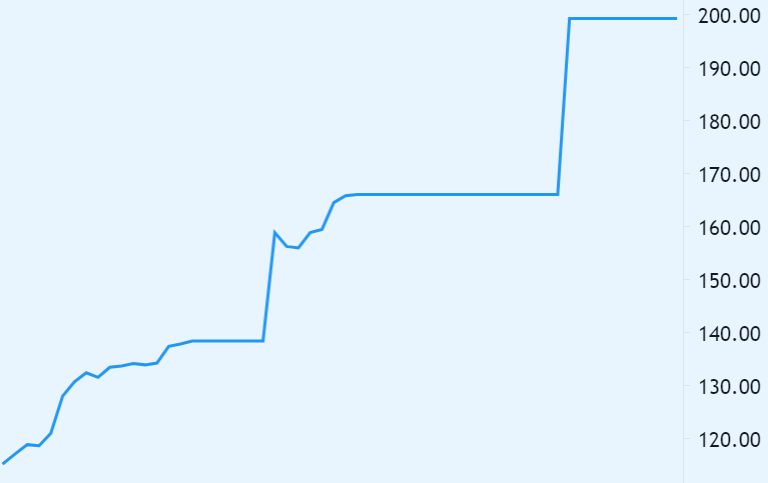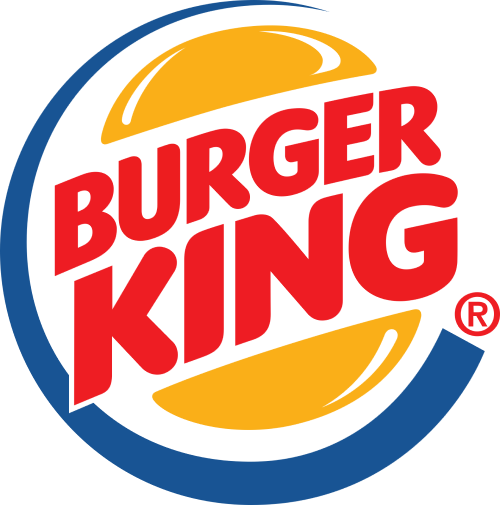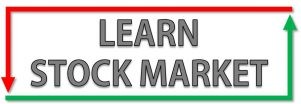Burger King was listed at the Indian stock market on 14th December. The IPO share price of Burger King was ₹ 60 per share.
From upper circuit today morning, Burger King has crashed to ‘Lower Circuit’ now. We had posted a warning on our Instagram page yesterday – asking people to be very careful.
At the bottom of this very article, we had also said people will find it difficult to sell shares of the company if the stock hits ‘Lower Circuit’. That’s exactly what has happened.
The company was getting valued higher than McDonald’s and Domino’s – i.e. when valued based on revenue to market cap. These were insane valuations and a crash was inevitable.
It looks like the Qualified Institutional Buyers are now selling, after retail investors lined up to buy at 220 rupees per share this morning.
Once again, avoid ‘hot stocks’. Remember, there is no quick or easy money in the stock market. Invest your time in learning and gaining experience, only then can you make money in the long run.
Do read the below article if you haven’t already.
The IPO was over-subscribed more than 156 times and the Grey Market Price (GMP) went as high as 59 rupees before the listing. This suggested a bumper listing, but what followed after the listing surprised and even shocked many market participants.
The Burger King Share Price was locked in Upper Circuit for 3 continuous days and the company has attracted even PMS fund managers like Basant Maheshwari – who bought more than 24 lakh shares at ₹ 112.79 per share on the listing day.

If the chart above looks confusing to you, let me explain.
The IPO was priced at 60.
The share price on opening at 10AM on 14th December was ₹ 115 per share.
It went to a low of ₹ 108.40 per share immediately after listing and then continued to rise throughout the day.
From 1:30PM onwards, the share price of Burger King was locked in upper circuit of ₹ 135 per share. It closed the day at the same price.
When a stock gets locked in upper circuit, it means there are a lot of buyers, but not enough sellers. In other words, the buyers were clearly outnumbering the sellers.
This trend continued on the second day. The stock opened ‘gap up’ at ₹ 145 per share and continued to rise.
At 10:30AM on 15th December, the stock once again hit ‘upper circuit’ of ₹ 162 per share and remained there for the rest of the day.
Once again, the buyers were outnumbering the sellers by a huge margin.
16 December 2020: On the third day, the stock once again opened in upper circuit. The Burger King share price has nearly hit the ₹ 200 mark on BSE.
What’s interesting is, the company is now valued more than ‘Westlife Development’ which runs the McDonald stores – even though the annual revenue is lower for Burger King and it operates in fewer stores as compared to McDonalds.
Does Burger King deserve such lofty valuations?
Will this trend continue on Day 4? Bookmark this page and visit again tomorrow for a more detailed update.

Buy or sell Burger King?
We do not give any buy or sell recommendations on this website. However, you’ve got to be aware about the positives and negatives:
The Positives first:
- A quick research on Google and apps like Zomato will show that Burger King has positive reviews. In general, people tend to like the taste of the burgers and other items that Burger King has on its menu. This is a big positive for any restaurant.
- The company currently operates on 260 stores. It has set an ambitious target of 700 stores by December 2026. That’s 73 new stores every year for the next 6 years or 6 new stores per month.
- Burger King belongs to the Quick Service Restaurant (QSR) category and this segment has a long way to go in India. QSR’s currently have only 4% market share in the entire food services market. This is way behind countries like United States at 39%, South Africa at 38% and Russia at 33%. Percentage wise, India is on-par with countries like China (5%) and Indonesia (6%).
- The entire ‘Food Services Market’ is worth ₹ 4,09,600 Crores – out of this food chains like Burger King, McDonalds, Dominos and others contribute 35,000 crore (less than 9%). This chain restaurant market has been growing at a healthy rate of 18% over the last 5 years.
Clearly, there is tremendous potential in a market like India. But since we are specifically talking about Burger King, there are quite a few negatives:
- The company is not profitable. In fact, it has repeatedly posted losses. The net loss for the last 5 years is ₹ 307 crore.
- With capital expenditure to open new stores, along with marketing expenses and the initial time that it takes for a new outlet to begin flourishing – it remains to be seen when Burger King can turn profitable.
- The shares of the company are already valued more than Westlife Development (McDonalds) and also commands a premium when the annual revenue is compared to the market cap. Jubilant Foodworks (Domino’s) is valued at 9 times its annual revenue. And we are talking about a well-established profitable company with more than 1200 stores across the country. Burger King is already valued more than 9 times its annual revenue.
Weigh the pros and the cons, do your research and then take an informed decision on whether to invest in Burger King or not.
Remember, there are several other listed companies in the stock market. Chasing ‘hot stocks’ that are hitting upper circuits can be one of the quickest ways to lose money in the market.
Those who applied for the Burger King IPO and got allotment, will be sitting on huge gains. The stock price has risen more than 3 times from its issue price.
₹ 60 to ₹ 200 is 233% gains. That’s the kind of returns people would be happy with over a 10 year period in the stock market!
In fact, it would take 21 years to get such returns from a bank fixed deposit!
Greedy for more? Then, continue to hold. Do remember that when a stock hits ‘lower circuit’ you cannot sell even if you want to. Just like you may not be able to buy a stock in ‘upper circuit’ even if you want to!
Hope this article helps. If you have any questions, please post in the comments section below.
In the future, this page will be updated with more details. The chart has just begun forming. It’ll definitely be interesting to follow the story as it unfolds in the next few months and years to come.

Leave a Comment